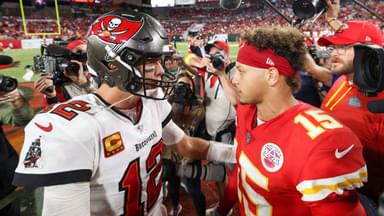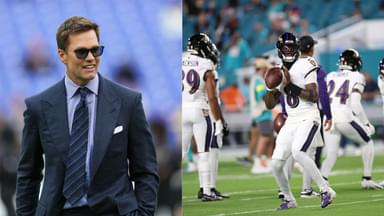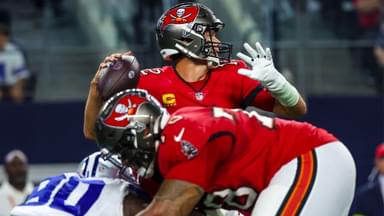Tom Brady was never the most athletic quarterback, nor did he have the strongest arm in the NFL—he couldn’t launch the ball 70 yards downfield like some of his peers. Yet, he became the epitome of precision, especially as his career progressed. A quarterback takes pride in throwing tight spirals, and the GOAT was a master of it.
Advertisement
For most of his career, Brady consistently delivered perfect passes, thanks to relentless practice and a deep understanding of the mechanics behind a great throw. But what exactly made his passes so perfect?
Brady teamed up with Veritasium to break down the science behind his iconic spirals. Interestingly, they found that even the GOAT’s throws weren’t always perfect, especially the longer ones. Still, there were specific fundamentals that set him apart.
It all begins with body position. According to Brady, a quarterback shouldn’t stand fully upright when throwing. Instead, leaning slightly forward helps get the body into an optimal throwing posture. Then comes grip—Brady emphasized that the grip on the ball should be firm but not too tight, especially around the wrist.
“The key to me, first of all, is you got to have a very light grip pressure on the football. I learned over time that I had to be really efficient with my mechanics. I had to have all my energy going right towards the target with a very relaxed posture, and it’s a really smooth, efficient throwing motion. So you’re really popping your wrist at the end, and even a little bit of wrist pop will create a little snap on the ball as it releases from my fingertips.”
Why? Because throwing a football without spin, even if perfectly aligned, is inherently unstable. A football isn’t a perfectly symmetrical object, so without spin, even a small gust of wind can push more air against one side than the other.
That imbalance causes the ball to tilt, wobble, and eventually tumble. As it turns, it presents more surface area to the air, increasing drag and slowing it down. It also makes the ball move unpredictably, which isn’t good for the intended receiver.
That’s where the spiral makes all the difference. Just like a spinning top stays upright, a spinning football stays stable in flight. The rotation keeps it from wobbling, allowing it to slice through the air cleanly and land exactly where the quarterback intended.
Tom Brady mastered these small details—body position, grip, posture, and wrist action—which allowed him to consistently deliver those perfect passes. It wasn’t raw athleticism that made him great. It was his precision and preparation.





